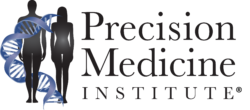Results of the first economic modeling study to estimate the cost-effectiveness of multigene panel sequencing (MGPS) as compared to standard-of-care, single-gene tests for patients with advanced non-small cell lung cancer (aNSCLC) appear modest on the surface. But a closer look indicates a missed opportunity for MGPS to inform cancer treatment.
When it comes to somatic testing of cancer cells, single-marker genetic testing (SMGT) reigns as the standard of care. In a first of its kind study published in JCO Clinical Cancer Informatics, researchers sought to analyze the cost effectiveness of MGPS in increasing quality-adjusted life years (QALY) for afflicted patients.
The research, commissioned by the Personalized Medicine Coalition (PMC) and using data provided by Flatiron Health, is part of a larger project intended to examine factors driving clinical utility and value for sequencing in cancer care writ large, says Daryl Pritchard, PhD, PMC’s Senior Vice President of Science Policy, who spearheaded the research.

Daryl Pritchard, PhD (above), is the Senior Vice President of Science Policy at PMC, where he leads the Coalition’s efforts to develop and promote optimal science-related policies and to increase awareness and understanding of personalized medicine among healthcare providers, patients, policymakers, and other stakeholders. (Photo courtesy of Daryl Pritchard, PhD)
The team began this work by looking at aNSCLC because it offered the richest data source compared to other cancers, Pritchard notes. The study included patients with stage IIIB or metastatic non-small cell lung cancer diagnosed between 2011 and 2016. Importantly, a payer advisory committee representing six payers from across the health insurance landscape helped shape the research team’s model analysis to ensure meaningful and credible results, he adds.
The relevance of the analysis, the study notes, is to “provide evidence for health insurers who must consider both value and budget impact when weighing coverage policies for MGPS.”
MGPS vs. SMGT By the Numbers
Overall, the team concluded that “MGPS is shown to have moderate cost effectiveness compared with SMGT in patients with aNSCLC.” Researchers arrived at this result based on the following factors:
- Testing costs of MGPS more than quadrupled those for SMGT ($1,948 vs. $467).
- Of SMGT patients, 23.3 percent were found to have an actionable mutation, while 18.7 percent of this subset received a targeted treatment.
- Of MGPS-tested patients, 30.1 percent had evidence of an actionable mutation, yet only 21.4 percent of these patients received a targeted treatment for which they were eligible.
- Patients who received a targeted treatment had a mean adjusted overall survival rate from the time of diagnosis of 2.31 years, compared to 1.73 years for those who did not receive a targeted treatment.
- The analysis of these inputs resulted in an incremental cost-effectiveness ratio of $148,478 per QALY gained for MGPS patients versus the SMGT cohort.
The detail that struck researchers and payers most, however, was the “practice gap” between patients eligible for targeted treatment and those who actually received it, Pritchard says.
Understanding the Practice Gap
Taking the analysis a step further, the researchers evaluated what would happen if all of the patients eligible for targeted therapies got them. “Then we would see that the overall survival would become a significant clinical benefit, and the cost effectiveness would improve dramatically,” Pritchard says. “It would no longer be considered borderline, but clear cost effectiveness. There’s great potential here, but it’s not being realized completely because of this practice gap.”
While Pritchard and his colleagues are planning further research to investigate what barriers prevented patients from receiving targeted therapies, he speculates that lack of reimbursement was among them.
However, the cost-effectiveness ratio should improve with time. “On the cost side, as the technology develops and is used more regularly, the cost of testing should come down,” Pritchard says.
What’s more, the effectiveness should also improve as new biomarkers are added to these gene panels, he says. “Since 2016 [the last year of the study period], I can already tell you that there have been more than another half-dozen biomarkers that would be added to a gene panel for lung cancer patients. Unfortunately, it takes a while to mine data. If we did this with 2018 or 2019 data, we’d probably already see a significant improvement in cost effectiveness,” Pritchard says.
—Debra A. Shute
Related Information:
